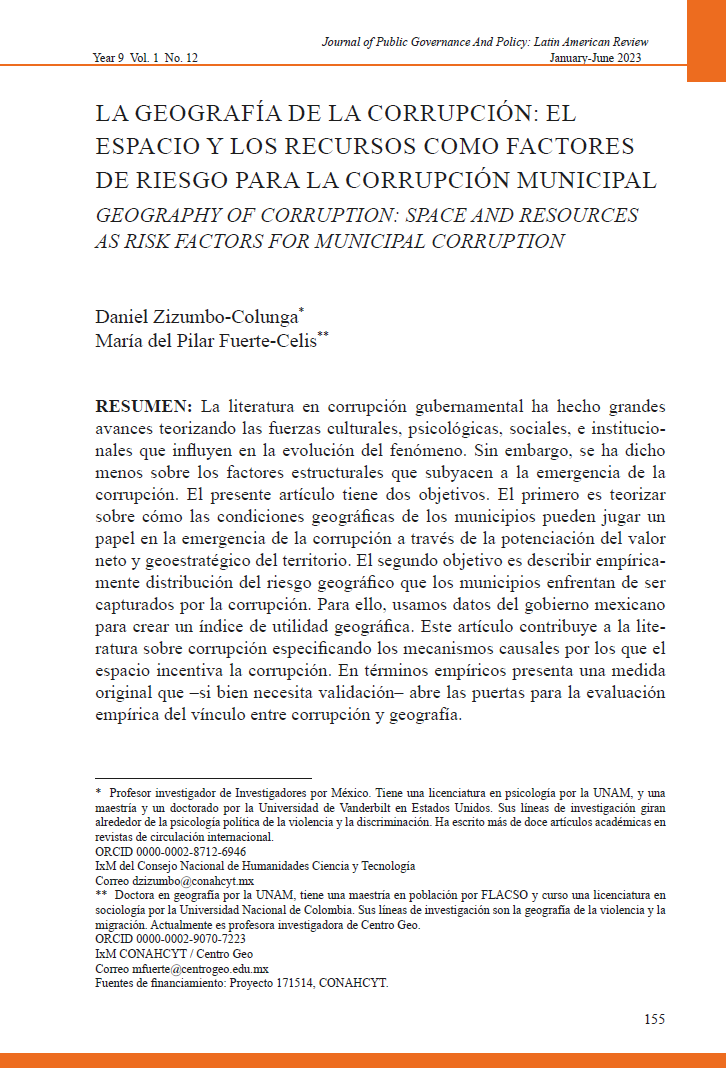La geografía de la corrupción: el espacio y los recursos como factores de riesgo para la corrupción municipal
Keywords:
geography, corruption, geographical utility index, strategic valueAbstract
The literature on government corruption has made great advances theorizing the cultural, psychological, social, and institutional forces that influence the evolution of the phenomenon. However, less has been said about the structural factors underlying the emergence of corruption. This article has two objectives. The first is to theorize about how the geographical conditions of municipalities can play a role in the emergence of corruption through the enhancement of the geostrategic and net value of the territory. The second objective is to empirically describe the distribution of the geographic risk that municipalities face of being captured by corruption. To do this, we use data from the Mexican government to create a geographic utility index. This article contributes to the literature on corruption by specifying the causal mechanisms by which space incentivizes corruption. In empirical terms, it presents an original measure that –although it needs validation– opens the door for empirical evaluation of the link between corruption and geography.
Downloads
Published
How to Cite
Issue
Section
License

This work is licensed under a Creative Commons Attribution-NonCommercial-ShareAlike 4.0 International License.




